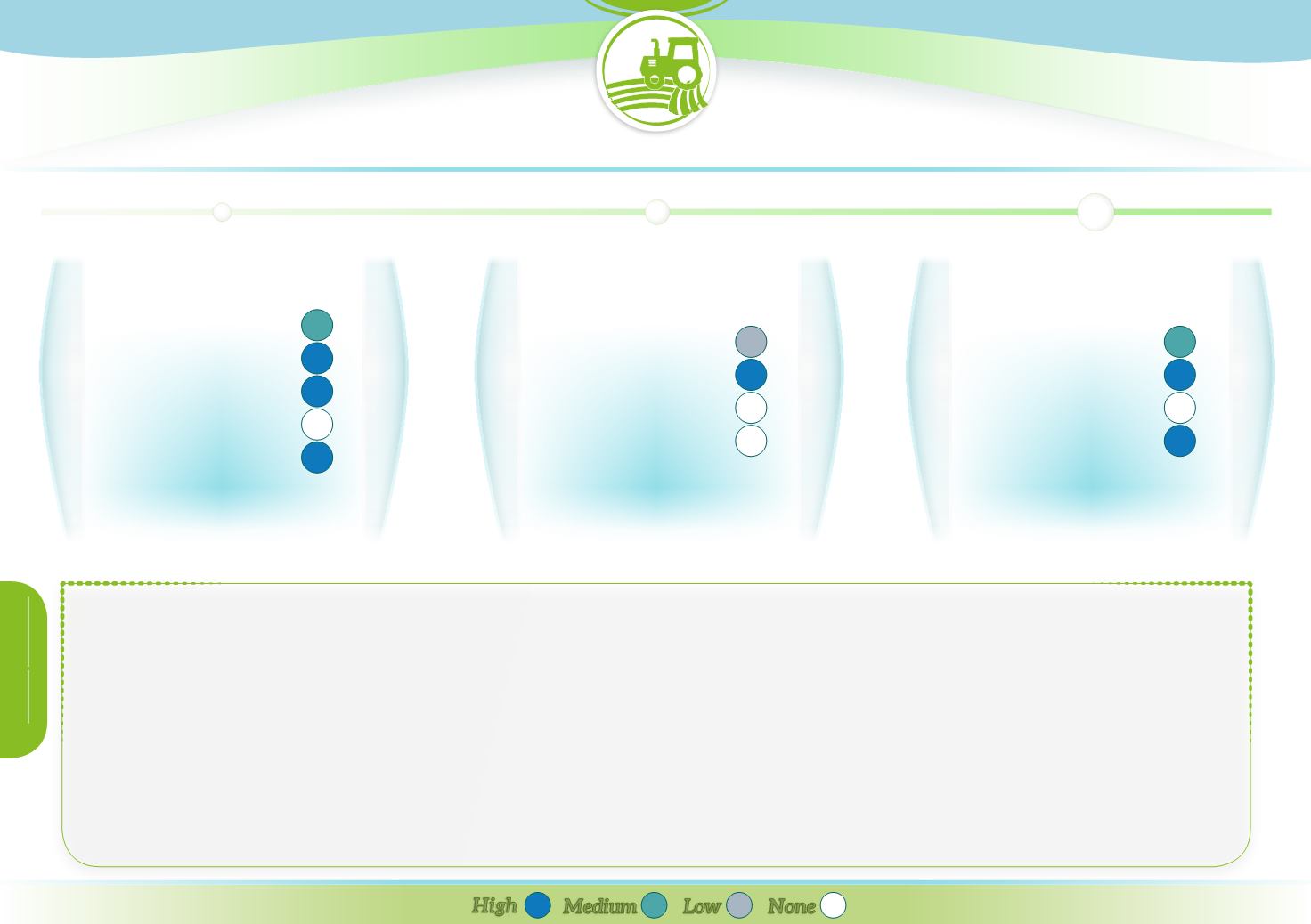
E
cosystem
servicesdelivered
Provisioning
Regulation & maintenance
Cultural
Abiotic
C
ontribution
topolicyobjectives
Water Framework Directive
Floods Directive
Birds & Habitats Directive
2020 Biodiversity Strategy
P
otential
biophysicaleffects
Runoff
Reducing pollution
Soil conservation
Habitat
Climate Change
High
Low
Medium
None
Studies report that no-till increases
soil water retention
in the upper soil layer by 6 to 12% compared to ploughing; in some cases runoff has been reduced by 40%. Flood
risk reduction has not been quantified, but follows from increased water retention, infiltration and runoff reduction. Catchment level promotion of no-till together with other
measures thus contributes to mitigating flood risks.
No-till can
reduce P and N loss
by 30 to 88% and
soil erosion
by 89% in hilly areas. Thus it contributes to improving and preserving water status of hydro-morphological
quality elements and preventing water status deterioration.
No-till increases
soil
aggregate stability, soil organic carbon (by 20 to 1300kgC/ha/yr), pore structure, biological activity, infiltration rate, hydraulic conductivity and soil strength,
but decreases the aeration of wet soils, increases acidity and P accumulation. These changes either result in higher or lower CO
2
emission (+220 to -57%) but CO2 emissions from
fuel use are lower in no-till systems (50 to 83%). No-till contributes to preserving soil biodiversity by increasing earthworm’s biomass (300%) and
invertebrate’s
population
and species, thus supporting wider biodiversity, which helps to address Biodiversity Strategy goals.
Combined with other measures, no.till can contribute to sustainable agriculture but its main impacts are linked to soil type and climate. In Europe, yields results may be 5%
lower with no till than with tillage, but they are higher in Southern Europe.


